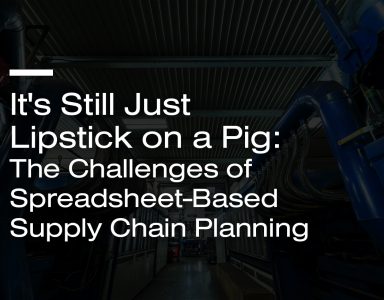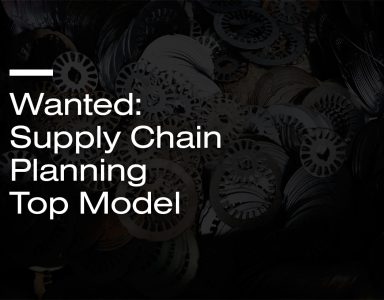Tampering is concept that W. Edwards Deming popularized and used often in his lectures. It is an important and yet subtle concept that many Supply Chain professionals and general managers still do not fully get. Tampering is basically trying to make adjustments to a finer degree than the normal fluctuation of that which you are trying to make. This often results in adding more variation to the process. As Deming said, “When a system is stable, telling a worker about mistakes is only tampering.”
Let’s define this a bit more precisely.
Not surprisingly in this blog, tampering involves the misunderstanding of variation. This misunderstanding leads to taking action we believe helps the situation. In truth, we add to the variation simply by taking action.
There are two basic kinds of variation: Common Cause and Special Cause. Common Cause Variation is the variation inherent in a system. It is the natural fluctuation in the system or process. Every system or process has variation. If you are making ball bearings, there is a natural or inherent variation in the diameter and weight.
Special Cause Variation is something different… well, special. Special Cause Variation is due to something that changed in process inputs or the process steps. That something is called an assignable cause. If that cause or source of extra variation is mitigated or dampened, the variation goes away. All that remains then is Common Cause variation. Most of the time, Special Cause Variation adds to the overall variation. There are instances, however, where an Assignable Cause could reduce the variation. In this case, we still want to find the assignable cause and instead of eliminating or mitigating it, we would want to incorporate it into the system or process to make things permanently better.
Our actions, problem-solving efforts, and management on a day to day basis should be focused on finding and eliminating Special Cause Variation. In this we strive to limit the variation only to Common Causes. If we can do this, we can claim the system or process is in control. If the Common Cause Variation needs to be reduced, the system or process must be changed. The system or process must be structurally improved to make improvement on the Common Cause variation. Another way of looking at it is that the system itself is the Assignable Cause for Common Cause variation.
Let us consider a simple ball bearing example. The process has been producing ball bearing in a nice bell shaped distribution with a mean diameter of 1 cm and a sample standard deviation of .015 cm. At some point, the process starts producing ball bearings with a mean of 1.01 cm and a sample standard deviation of .02 cm. This change causes rejections downstream. The change is noticeable in the control charts indicating an Assignable Cause change in the changes in mean and variation. A team studies and investigates the problem and realizes that the supplier has changed the alloy composition of the steel in a way that was not being tested against. The supplier changed the alloy back to the previous composition and the problem was solved.
Suppose however, a key customer insisted that the process which had been reliably producing ball bearings at 1 cm with a sample standard deviation of .015 cm needed to produce with a sample standard deviation of .008 cm. Is the machinery capable of this? To achieve this level, something has to change in the system, the very structure of the process. The quality of the materials, the precision of the machinery, probably the training of the operators… something has to change!
So what is tampering? Tampering is attempting to adjust the process in the aim of improving quality when the only source of variation is common cause variation. When we do this, we actually increase the variation in the process. We are over adjusting when we should simply leave things alone.
Thus we have to know if the process is in control i.e. the only source of variation is common cause or not. When the process is not in control, we have to make adjustments to mitigate or eliminate the special causes of variation.
Do you have examples of tampering both in the office and the factory that you would care to share?
We will follow this up with a piece on tampering in the realm of demand planning and inventory management.


